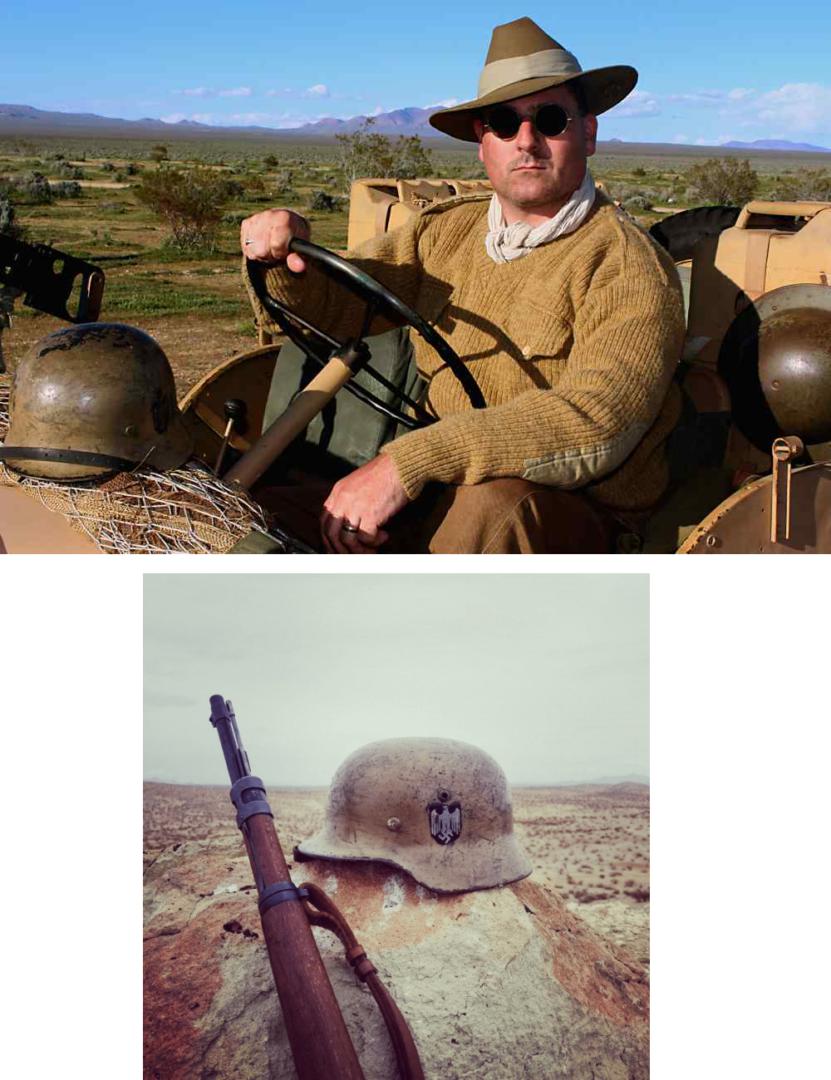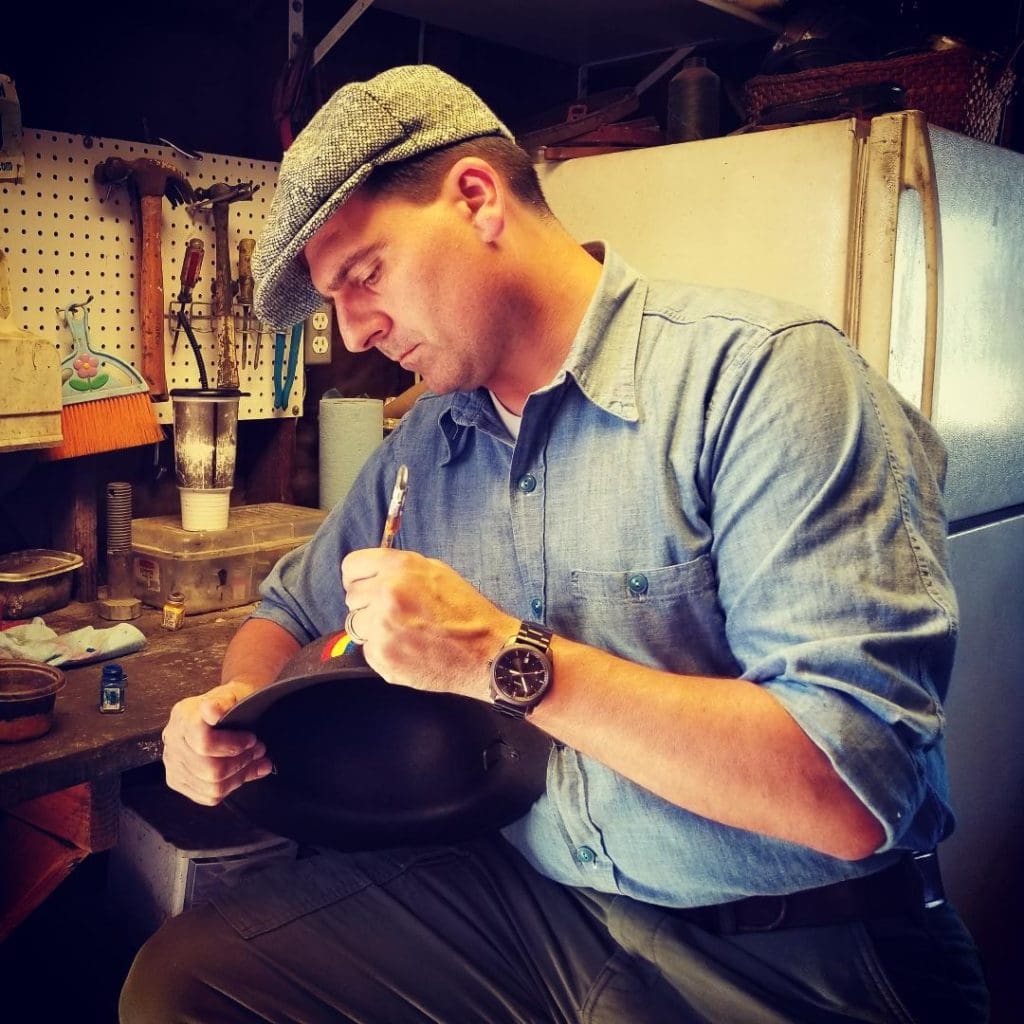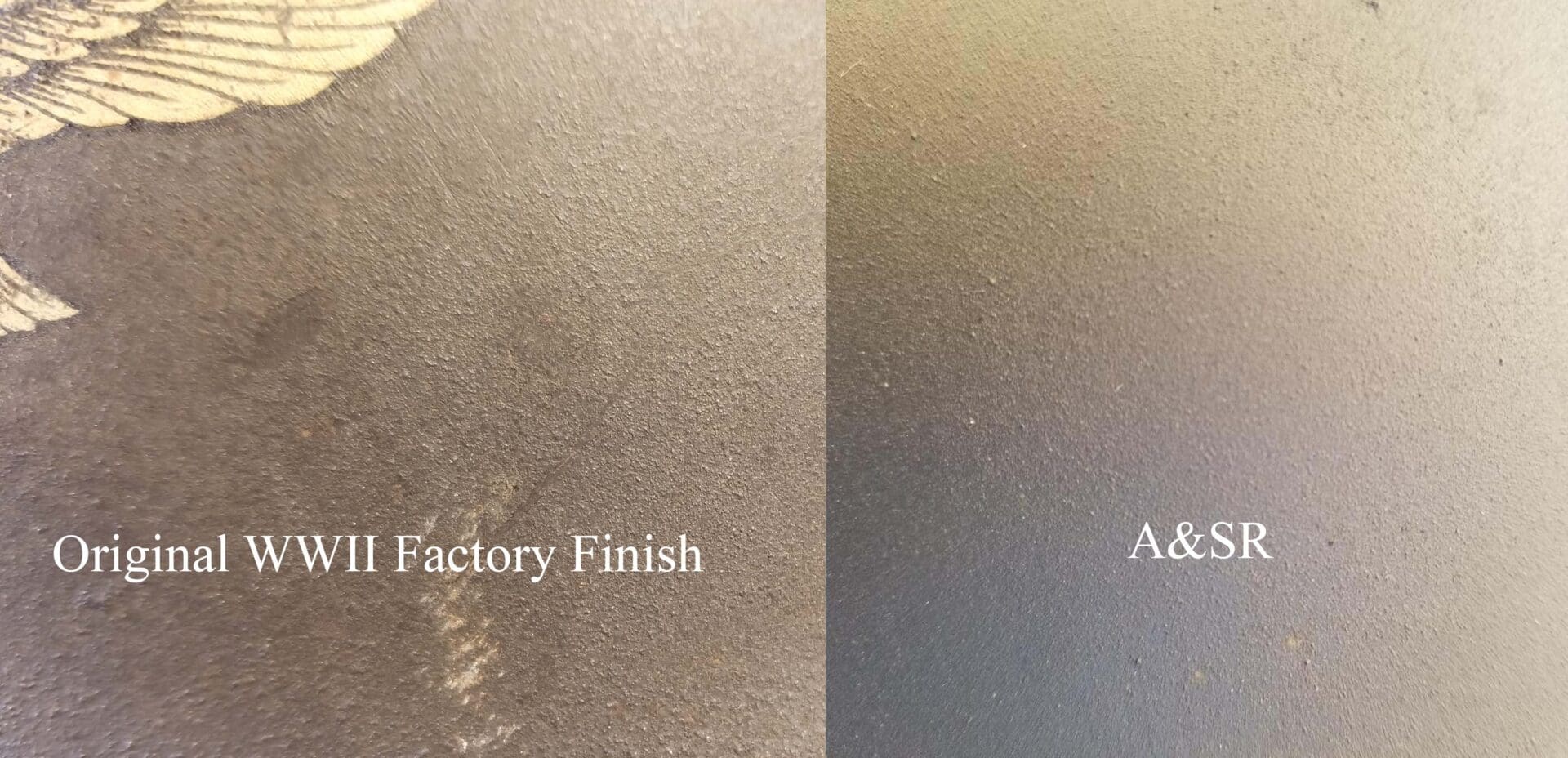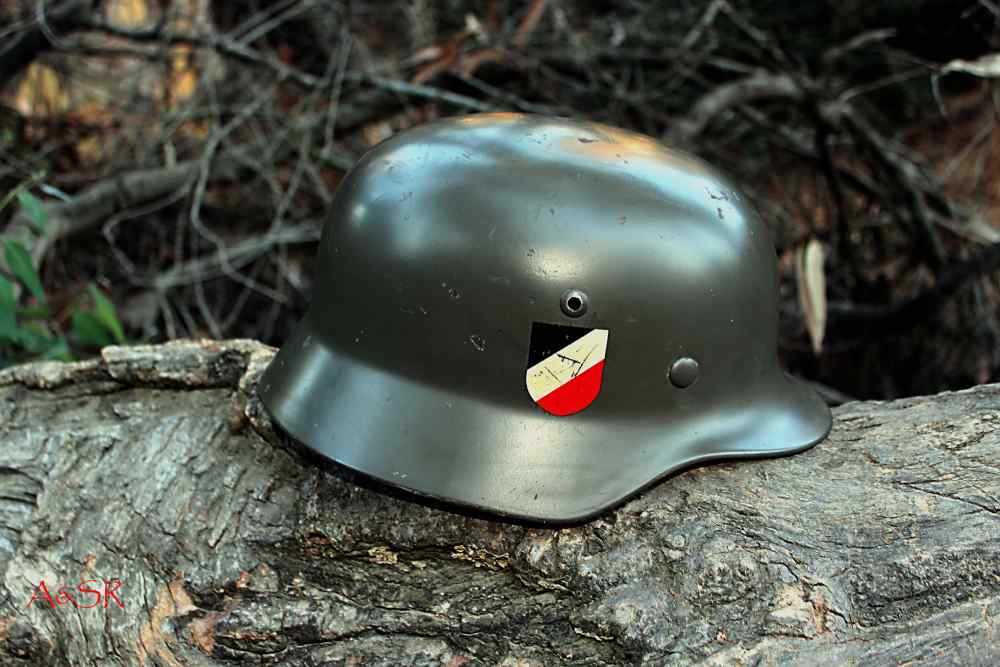
Alexander and Sons Museum Quality Helmet Restoration
Welcome to Alexander and Sons Restoration. I offer museum-quality World War I and WWII helmet and field gear restorations to collectors who are looking for the highest degree of authenticity.
The name Alexander and Sons Restoration comes from my great-grandfather, Alexander Kölher. He was an ethnic German from a small village in Lithuania. He, in fact, served in the Kaiser’s army in the early 20th century. My Father told me one of his early memories of Alexander was being taught to goose step. I felt it was a good name for my company, and it sounded a little like some of the companies that made helmet components during the war.

Back in the early 2000s, I purchased an M35 German helmet that had been painted black by the Czech fire brigade. I wanted to restore it to its original wartime look; little did I know the headache I was about to cause myself. The first thing I did was get a few books about German helmets. I was amazed to find out all the different sorts of paint schemes, textures, and camouflage patterns that existed between 1935 and 1945. I decided I wanted a pre-war apple green double decal Wehrmacht helmet. The problem was where to find the correct paint. This was where the headache started. I went to several different paint stores, and no one had anything close to the colors I had seen in my books. I decided I would have to do it myself. During this time, I was fortunate enough to meet some collectors who were kind enough to let me match the paint on original helmets from their collections. I finally did find a nice apple-green helmet, and I was able to match the paint. I ended up enjoying the process so much that I soon started to buy more helmets and restored them as well. There were so many interesting camouflage configurations, and I wanted to attempt them all. It was not long before I started to get phone calls from local reenactors asking me to restore their helmets. Before I knew it, I had over 300 restored helmets under my belt.
It was around this time I realized that I had to start a business. I decided then and there to get myself a website domain name and offer my services to anyone who was interested.
You may be asking yourself what makes me different from some of the others out there who offer similar services. I like to let my work speak for itself. I will say, however, that I bring a great deal of research and knowledge to my work. I have examined many original helmets, and I have a pretty good feel for how they should look from different factories and at different stages of the war. If you have questions about this, feel free to drop me an e-mail. I am more than happy to answer your questions. Some of my competitors may do decent work, but many lack the historical knowledge to restore helmets correctly. This ranges from incorrect paint, dome stamp decals instead of ink stamps, to the use of sand instead of aluminum oxide to texture the paint.
I like my restoration to tell a story like the originals. Not too long ago, I examined an original M40 that had started life as a single decal field gray army helmet. It was then painted with tropical tan paint, then over-painted with whitewash, and finally re-painted again with field gray paint. Imagine the campaigns this helmet might have been on. When I restore your helmet, you can have it tell what ever story you want. Do you want it to look like it was with the Totenkopf division at the Demjansk pocket, maybe a Belarusian volunteer Luftwaffe flak gunner’s helmet fighting in Berlin in 1945? How about Stalingrad, El Alamein, Monte Casino, Normandy? You’re the boss, let me know the story you want your helmet to tell, and I will make it happen. Welcome to Alexander and Sons Restoration. I offer museum quality German helmet restorations to collectors who are looking for helmets that are restored historically accurate.
The Alexander and Sons Restoration Difference
In the last few years, German helmet restoration has become a competitive business. As a consumer, you have a lot of choices, and no doubt you want to get the best value for your dollar. No one wants to spend 300 plus dollars on a helmet that has been restored incorrectly or poorly.
I think it’s important to explain what sets my restorations apart from some of the other choices you’re likely to encounter.
Each one of my restorations is done with the care and attention to detail I would give one of my own helmet. I do not cut corners. I work hard to give you the restoration you are looking for. With each customer, I like to trade as many e-mail or have as many phone calls as possible to make sure I am providing them with what they want.


I only use materials (provided they are still available) that would have been available during the era the helmet is representing. I use only oil based enamel paint. The paint is either applied with a pneumatic paint gun or by hand as the situation dictates. I do not use acrylics, water-based paints, or caned spray paints to do my restorations. I have done a lot of experimentation with different methods of painting and the only way the finishers will look and feel correct is if they are done the way it was done back then, with a paint gun or by hand. While it’s true, there are companies that sell field gray paint in a spray can. Helmets that are painted with this paint look okay from a distance, but the paint lacks the quality, strength and overall feel of real oil based enamel paint that is applied with period methods. So if you’re looking for a helmet that can stand up to years of hard reenacting or a 100% accurate helmet to display in your collection, my restorations are for you.
While I am pretty secretive about my aging techniques, there are a few things I think it’s important to mention. Many of my competitors like to cut corners when aging. One of the most common methods is to spackle rust-colored paint onto the helmet or smear the helmet with brown shoe polish to simulate rust, then spray a sealant over it and call it aging. From 10 feet away the helmet looks okay, but from up close you can tell what they did. Aging a helmet to look battle worn is a pure art form. It is more than just banging the helmet around and scuffing it up, it’s realizing how paint wears and ages over time, and replicating that process. Helmets that are exposed to harsh battlefield climate exhibit a certain look and feel. I work hard to identically replicate that look. So when I age a helmet for you to wear, smoke damage, rust and scuffs are all real.


I do not offer fantasy helmets. Each restoration I do, whether it is one of the helmets I offer on my site or a helmet I am restoring for a customer, has a great deal of research put into it. Everything from the placement of the decal or texture of the paint I back up with historical evidence. The colors I use are all 100% matched to original samples from the era. I do not use guess work, I base each color off the real deal. If I can’t verify it was done a certain way, then I don’t offer the restoration. You will notice in the item description, I often give reference to what I based the helmet restoration on. Whether it's the French Moroccan Goumier helmet or a Satin black SS-LAH helmet with the correct hand painted decals, rest assured that a great deal of research was done to get the restoration correct.
